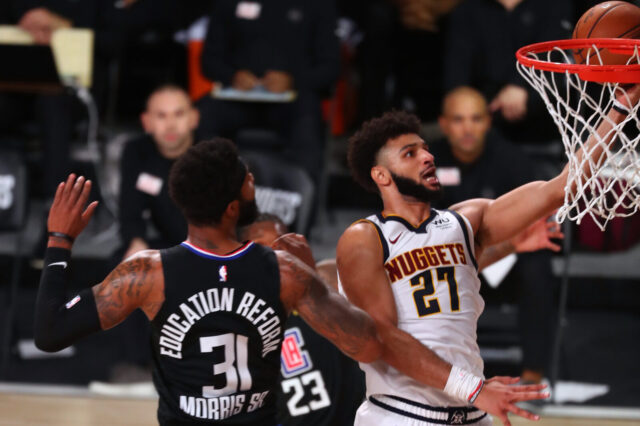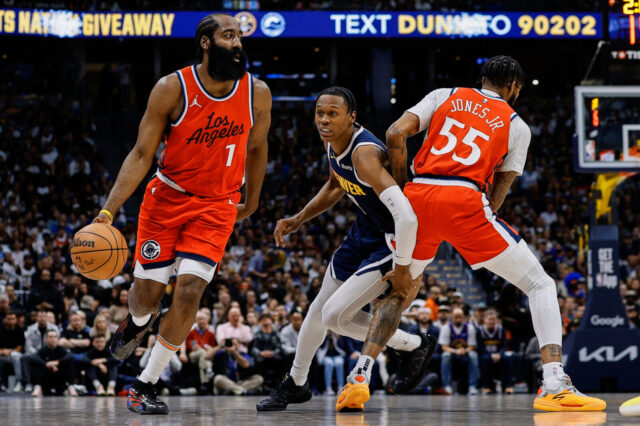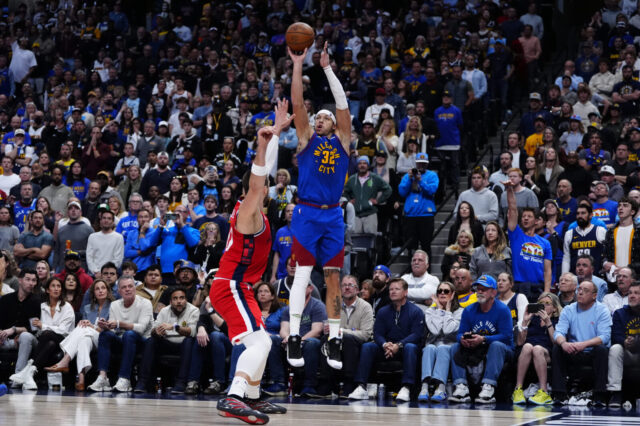A growing trend in the NBA is to find long, athletic power forwards that can check guards on the perimeter, stand up to physical play in the post, and most of all, efficiently shoot 3-pointers.
Enter Marquese Chriss – the 18-year-old from the Sacramento, Calif. area declared for the draft after one season with the University of Washington, hoping to follow in the steps of a former Sacto-native Ryan Anderson and find a home in the NBA as a stretch-four.
The 2016 draft doesn't look like an especially deep draft, and when a void is created in the universe, matter finds a way to fill it. So when an 18-year-old player that measures in at 6-foot-9-inches, 225 pounds, and can shoot 35 percent from the perimeter declares for the draft, more and more people start to notice.
A cursory look at Chriss can quickly get you excited about his potential (the p-word is going to appear a lot). He began playing basketball after breaking his collarbone playing football in the eighth grade, and that athleticism has transferred to the basketball court. He has good hands, allowing him to catch the ball well and get up for a shot attempt. He gets a lot of points on dunks, either catching alley-oops and finishing or grabbing offensive rebounds and going back up. His shooting touch allows him to pop off the pick and roll or float on the perimeter and space the floor.
Defensively, Chriss uses his athleticism to mark opponents on the perimeter as well as contest for defensive rebounds. Chriss also used his springs to block shots – a lot of them. He averaged 1.6 per game, including a 6-block performance against the University of Colorado.
Unfortunately, that desire to block shots lead to a lot of fouls – he average more than four per game. He fouled out of 15 games – in a season with 34 games, it’s hard to understate how large of a problem that was. Things were so bad that the Washington Huskies arraigned for Chriss to meet with a sports psychologist to help him mentally deal with playing defense, according to the Seattle Times.
The mental aspect of the game showed up when he needed to defensive rebound as well. Against elite competition, simply being able to jump high isn't enough to get rebounds. Chriss often looked lost on the defensive glass, standing around, not putting a body on a player and letting them get position for offensive rebounds. They'd get the board, and then he'd foul them as they went back up.
Learning when to contest shots is a key development for his game on the next level. Players that could block every shot shouldn't necessarily try to block every shot – sometimes it's better to stick to your man, box out, and get the defensive rebound. Sometimes it's better to pass the ball back out to the perimeter rather than trying to dunk over them – it's something that could come with experience, but not every player gets it.
But the potential for Chriss to become a valuable contributor isn't going away. Come the 2016 draft, Chriss is still going to be the same height and have the same physical abilities. He can add more strength to his frame, improve his ballhandling, and work with coaches on his defensive rebounding. Chriss is one of the highest risk-reward players in the draft, in my opinion.
If the Nuggets find themselves with an opportunity to draft Chriss, he's an intriguing prospect to look at. Much of the decision to draft him could come down to how the front office views the power forward situation next season. Is the future frontcourt of the Nuggets a Jokic-Nurkic pairing? Are the Nuggets better off working Jokic and Nurkic in a rotation at center alongside Kenneth Faried? What happens with Darrell Arthur, who is a 6-foot-9-inch, 235 power forward that shot 39 percent on 3-point attempts this season?
I think that if Chriss is put in a situation where he has one or two seasons to adjust to the NBA, that would go a long ways towards determining his success long-term in the NBA. Unfortunately, if he's going to be a top-10 pick, the team that selects him is likely going to want him to start rather than come off the bench for two seasons. That is a situation that I don't think will work out well for Chriss.
If the Nuggets want to roll with the "Jurkic" frontcourt, Chriss could be an option, but his contributions would be muted as he sits on the bench behind Jokic, Faried, Arthur, and the small-ball lineups with Danilo Gallinari and Wilson Chandler. If the Nuggets keep Jokic and Nurkic at center, continue to start Faried, and bring Arthur back, Chriss might be worth the investment. He can be "two years away" and improve his game with the Nuggets development staff, and be a future option at power forward.
If Chriss is a top 10 selection, I think that the risk outweighs the reward, and the Nuggets could find a different player that could make a more immediate contribution. If he's still on the board when the Nuggets second first-round pick comes around, which seems highly unlikely at this point, the reward outweighs the risk, and the Nuggets taking him would be a smart move.
This content is no longer available.


